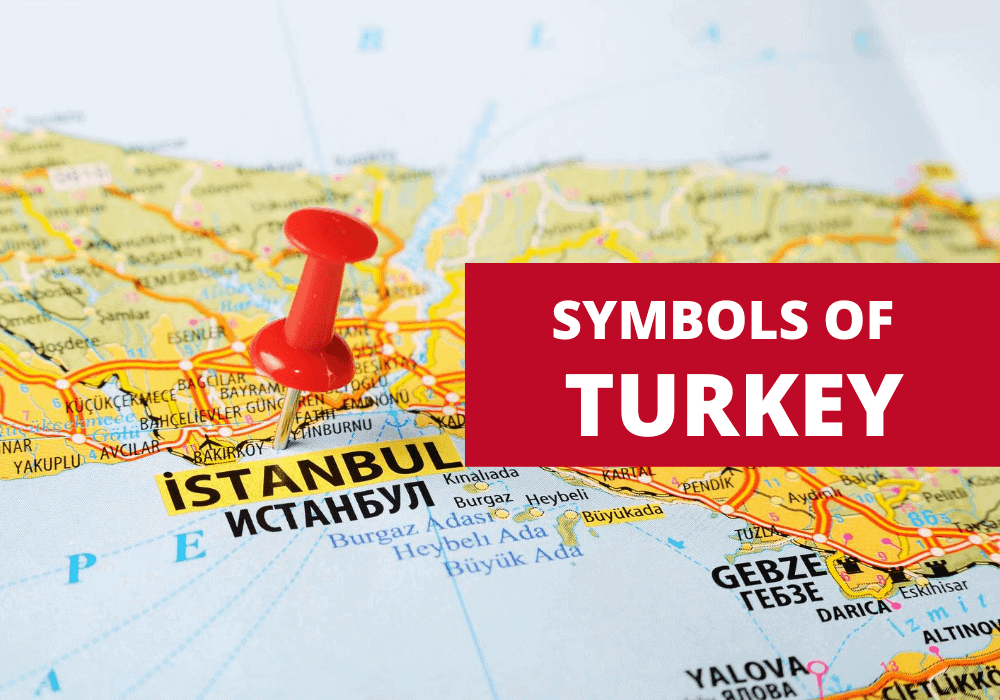
Table of Contents
Turkey is a beautiful, culturally diverse, traditional yet modern country and one of the world’s most popular travel destinations. The country is known for its stunning landscapes, delicious cuisine and rich history, and the many official and unofficial emblems that represent it. Here’s a look at some of these symbols of Turkey and why they’re significant.
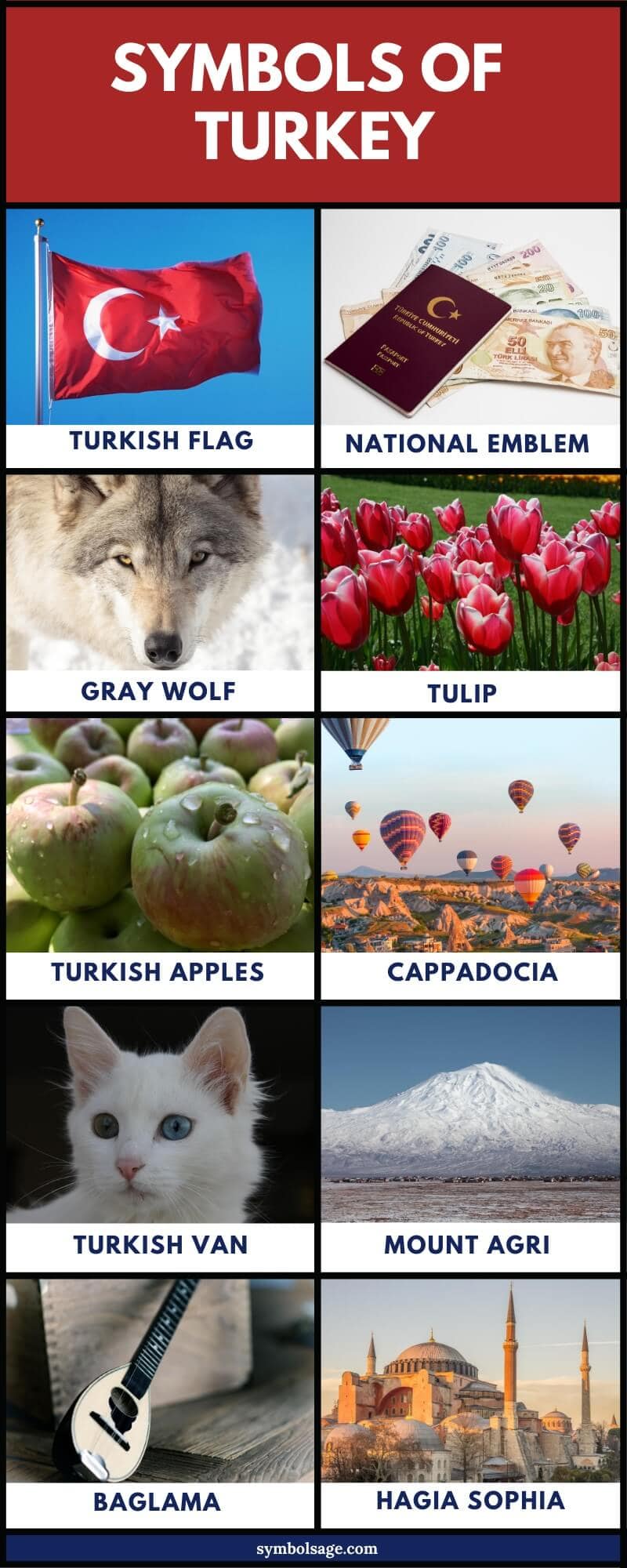
- National Day: October 29 – Republic Day of Turkey
- National Anthem: Istiklal Marsi (The Independence March)
- National Currency: Turkish Lira
- National Colors: Red and White
- National Tree: Turkish Oak
- National Animal: The Gray Wolf
- National Dish: Kebab
- National Flower: Tulip
- National Fruit: Turkish Apple
- National Sweet: Baklava
- National Dress: Turkish Salvar
Flag of Turkey
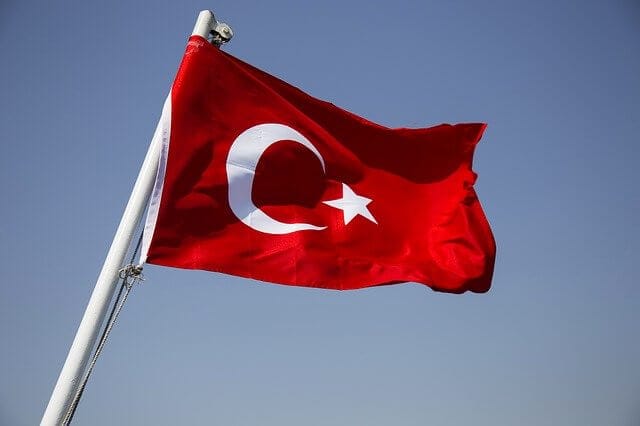
The Turkish flag, often called ‘al bayrak’, features a crescent and a white star defacing a red field. The crescent is symbolic of Islam and the star signifies independence. The red field symbolizes the blood of soldiers on which the crescent and the star are reflected. As a whole, the Turkish flag is seen as a reassuring symbol for the people of Turkey for whom it holds a special place and is highly valued.
The current design of the flag is derived directly from the Ottoman flag which was adopted in the latter half of the 18th century. It was modified and acquired its current form in 1844 and in 1936 it was finally approved as the national flag of the country.
The flag is flown on government buildings in Turkey as well as at many national events like Republic Day. For the mourning of certain tragic events it’s presented at half-staff and it’s always draped over coffins at state and military funerals to honor the deceased.
Coat of Arms
The Republic of Turkey doesn’t have its own official national emblem, but the star and crescent featured on the country’s flag are used as the national emblem on Turkish passports, identity cards and at diplomatic missions. The crescent is currently in use by the Turkish government to honor all religious affiliations of the people as well as their nation and the white, five-pointed star symbolizes the diversity of the various Turkish cultures.
In 1925, the Turkish Ministry of National Education held a competition for a national emblem for their country. A painter won first place with his drawing of a coat of arms featuring Asena, the mythological gray wolf in the Gokboru clan myths. However, this design was never used as the coat of arms, although why isn’t exactly clear.
The Gray Wolf
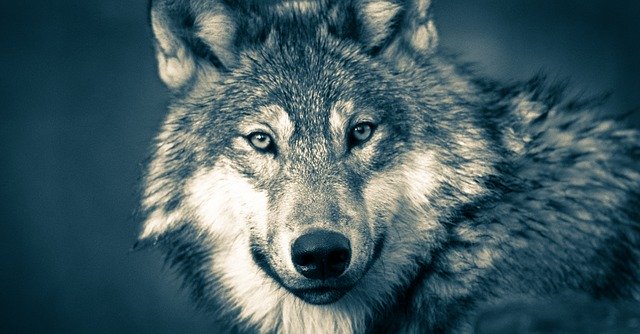
The gray wolf or the Iberian wolf is an animal of great significance to the people of Turkey and there are many legends and stories surrounding the majestic beast.
According to one Turkish legend, the Ancient Turks were raised by wolves while other legends says that wolves helped the Turks to conquer everything in their way in the very chilly weather where no beast apart from a gray wolf can go. In Turkey, the gray wolf symbolizes honor, guardianship, loyalty and spirit which is why it became the national animal of the country, considered sacred and revered by the Turks.
The gray wolf is the largest in the Canidae family and can be easily distinguished from jackals or coyotes by its broader snout, shorter torso and ears and a much longer tail. Gray wolves have very fluffy and dense fur best suited for winter and long, powerful legs that are ideal for moving about even in the deepest of snow. Unfortunately, the wolf population in Turkey is declining rapidly with only about 7,000 of them remaining so conservation projects are currently underway to remove the threat of extinction.
Presidential Seal
The official seal of the Turkish President, known as the Presidential Seal of Turkey, goes back to 1922 when it was first created. Three years later, its proportions and characteristics were legalized and it officially became the Presidential Seal from then on.
The seal features a large yellow sun with 16 rays in the center, some long and some short, symbolizing the Turkish Republic. It represents the infinity of Turkey and is surrounded by 16 yellow five-pointed stars. These stars stand for the 16 independent Great Turkish Empires in history.
The sun and stars are superimposed on a red background, which is said to resemble the blood of the Turkish people. This seal is one of the oldest seals in the world that’s still in use and can be seen on all official and legal documents in Turkey.
Tulip
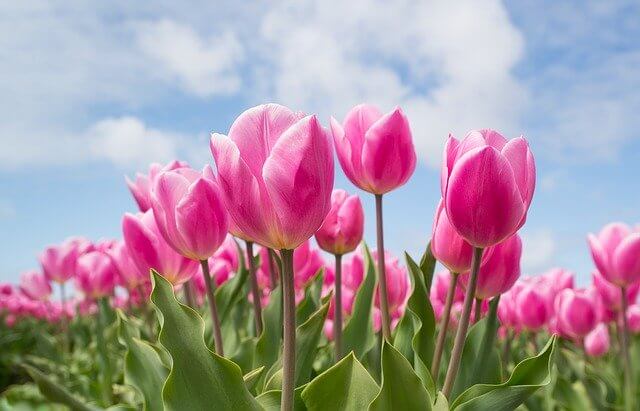
The name ‘tulipa’ is the botanical name for the flower, derived from the Turkish word ‘tulbend’ or ‘turban’ since the flower resembles a turban. Tulips come in a wide range of bright colors including red, black, purple, orange and there are also some bi-colored varieties. In the 16th century it became the national flower of the Turkish Republic and every year, the ‘Tulip Festival’ is held in April in Istanbul, the capital city of Turkey.
Throughout the history of Turkey, tulips have played a significant role. There was also a certain period of time called the ‘Tulip Era’. Under the reign of the Sultan Ahmed III, this was an era of enjoyment and peace. Tulips became important in the Turkish art, daily life and folklore. It was seen everywhere on embroidery, textile clothing, handmade carpets and tiles. The Tulip Era came to an end in 1730, with the Patrona Halil revolt which resulted in the de-throning of Sultan Ahmed.
Turkish Apples
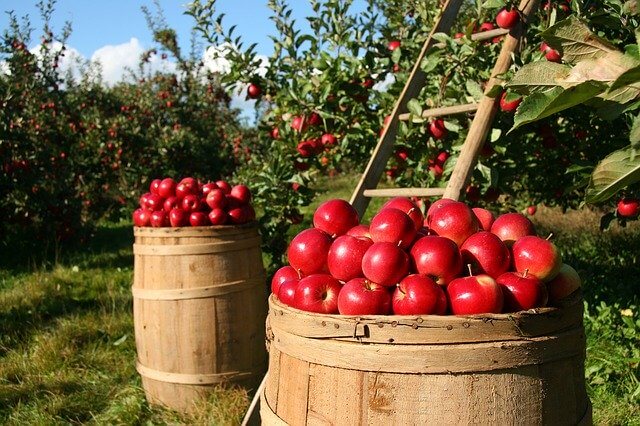
The national fruit of the Republic of Turkey, Turkish apples are incredibly popular due to their delicious taste. Turkey produces more than 30,000 tons of apples annually, making it the second largest apple producer in Europe. Apples are highly significant in the economy of the country and are grown all throughout the Turkey in many regions.
The apple motif has been widely used in Turkish culture throughout the ancient times to the present day. It has frequently been used for several purposes related to treatment, health, beauty and communication. The apple remains an important part of many rituals in Turkey.
The apple also represents love and commitment in Turkish culture, and offering an apple to somebody shows the desire for marriage. In Anatolia (western Turkey), the practice of giving apples as a way of proposing to someone is a practice that exists to this day.
Turkish Van
The Turkish Van is a long-haired domestic cat that was developed from a variety of cats obtained from several cities in modern Turkey. It’s an extremely rare cat breed that’s distinguished by the unique Van patter, in which the color is mostly restricted to the tail and the head, while the rest of the cat is completely white.
The Turkish Van has only one coat of fur that feels as soft as rabbit fur or cashmere. It doesn’t have an undercoat, which gives it its sleek appearance and the single coat it does have is strangely water repellent, making the task of bathing them a challenge. However, they love water which is why they’re often called ‘swimming cats’. These gorgeous cats are extremely shy around strangers but they’re also highly affectionate towards their owners and make cute and loving pets.
Some Van cats have strangely colored eyes and it’s also possible to see some with eyes of completely different colors, like one blue eye and one green eye which many people tend to find quite unsettling.
Mount Agri
The Agri province in Eastern Anatolia is one of the highest regions where the highest peak in Turkey is located. Rising up to 5,165 meters, the snow-capped, dormant volcano known as Mount Agri, also known as Mount Ararat, is an iconic symbol of Turkey. It’s said to be the site where the second beginning of the world took place and it’s summit is believed to be where Noah’s Ark rested after the flood.
In 1840, the mountain is believed to have erupted, resulting in massive earthquakes and landslides which killed up to 10,000 people. It’s widely recognized as a national symbol of the Republic of Turkey, offering magnificent scenery and providing many opportunities for skiing, hunting and mountaineering.
Turkish Baglama
The baglama or ‘saz’ is the most commonly used stringed musical instrument in Turkey also known as the national instrument of the country. It’s usually made from juniper, beech, walnut, spruce or mulberry wood, has 7 strings divided into 3 courses and can be tuned in many different ways. This ancient instrument is commonly used in the classical music of the Ottomans and also in Anatolian folk music.
The baglama is played somewhat like the guitar, with a long flexible pick. In some regions it’s played with fingernails or the tips of fingers. It’s considered a fairly easy instrument to play and most of the Asik players from the eastern part of Turkey are self-taught. They use it to accompany songs which they write and perform at informal gatherings or in coffee houses.
Hagia Sophia Museum
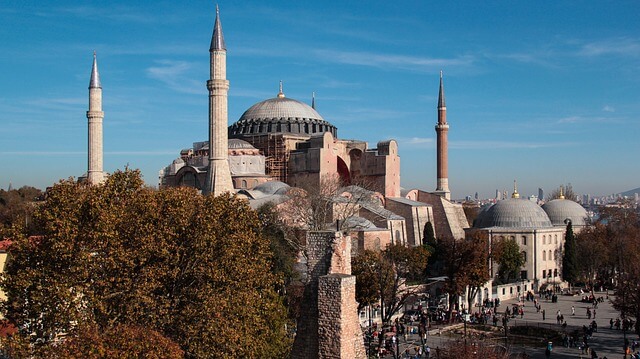
The Hagia Sophia museum, located in Istanbul, is an antique place of worship that was formerly the Church of Hagia Sophia. The name ‘Hagia Sophia’ or ‘Aya Sophia’ means holy wisdom and it was built back in 537 as a patriarchal cathedral and was said to be the largest Christian church of the Byzantine Empire.
In 1453, after Constantinople fell to the Ottoman Empire, it was converted to a mosque. In the mid-20th century, the Turkish Republic turned it into a museum but in 2020 it was re-opened to the public as a mosque.
The mosque is artistically and richly decorated and is of masonry construction. Its stone floor dates back to the 6th century and its dome has been an object of interest for many art historians, engineers and architects around the world because of the innovative and unique way the original architects had envisioned it.
Today, the significance of the Hagia Sophia has shifted with Turkish culture but it still remains an iconic landmark of the country, signifying the rich diversity of the place.
Wrapping Up
Turkey continues to captivate visitors with its stunning landscapes, traditions and diverse mix of cultures. To learn about the symbols of other countries, check out our related articles:








